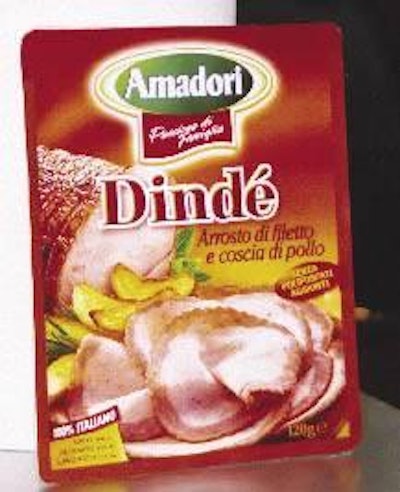
Two years ago at the time of the Anuga international food fair in Cologne, Germany, avian influenza (AI) was playing havoc with the poultry industries in south-east Asia, and the outbreaks in the Netherlands had been contained. It was a threat but still a long way away on the other side from Europe, and H5N1 did not emerge until November 2003. Perversely, the loss of millions of birds in the Netherlands had left Europe short of birds and the market had strengthened.
Two years on, however, the H5N1 virus had emerged and was gradually working its way westwards firstly Siberia, then in Turkey, Greece and in a parrot in quarantine in the UK. It was splashed over the front page of newspapers throughout the western world, and consumers got the wrong idea despite plenty of assurances to the contrary that poultrymeat was no longer safe to eat. Retail sales slumped.
But whatever the final consumers thought, those who manned the poultry stands throughout the five days of the Anuga show had no such doubts about the safety of their products. It would have been a message that the marketing teams were getting across to their guests while those back on the farms, hatcheries, mills and processing plants were strengthening their biosecurity defences against the dreaded H5N1.
As far as Nick Shaw, a director of Cargill Integra was concerned, AI had not been a talking point on his stand. None of the sites of the Cargill subsidiary, Sun Valley-Thailand, had had AI, past or present, and none of his visitors over the five days had raised the issue apart from Poultry International on the fourth day. The company was still producing 1.44 million birds a week.
Over on the Amadori stand, marketing director, Luigi Paravella, was lamenting a 20% fall in the Italian market and, as AI fears circulated, reports of 30 and 40% falls in Spain and Portugal. It was too much to expect that breaded breast fillets in the shape of elephants, hippos, lions and crocodiles would turn the tide, but this latest line was evidence that the stream of novelty lines continues to flow.
Francesco Amadori, whose parents started the business, describes himself as the biggest poultry farmer in Europe. He backs up the claim with a web site that records a turnover of 640m a year, six slaughterhouses, backed by six hatcheries, three product plants, five feed mills and 30 subsidiaries.
Amadori's annual output of poultrymeat is put at 200,000 tonnes - twice that for Slovenia, one of the 10 eastern European states that joined the EU last year. Spurred firstly by the new freedoms that followed the collapse of the Berlin wall and second by EU membership, poultrymeat production in Slovenia soared from 68,000 to 103,000 tonnes between 1999 and 2004. There has been an equally dramatic expansion in the number of eastern European exhibitors at Anuga in recent years up from 156 in 1995, through 341 in 2003 to 459 in 2005.
Among the poultry companies in the eastern Europe contingent were: Pivka with chicken and turkey kebabs, packs of liver, heart and stomach (labelled as edible viscera') and chicken and turkey hams, with and without olives; ready-meals specialists, Heat to Eat, with a range of national dishes, such as turkey goulash, red pepper chicken goulash and sweet-and-sour chicken; Perutnina offered more ready-to-serve meals plus frankfurters and cooked sausages (all from Slovenia) and finally, Avis Ltd with fatted duck liver from Bulgaria.
To reinforce its claim to be wellness specialists', Wiesenhof (Germany's largest poultrymeat company) was offering its chicken fillets in yoghurt-mango, yoghurt-curry and yoghurt-Asia varieties for the stir-fry market. The company started exporting in 1999 and now 18% of its weekly output of 4.2m chickens, 200,000 turkeys and 250,000 ducks goes overseas.
Omelettes withoutbroken eggs
Anuga 2005 was, as in previous years, very much a poultrymeat occasion, with just a handful of egg product companies taking stand space. Leading the way were two veterans, ABCD-Karea from France and the Danish company, Danaeg. Both companies were offering a wide range of ready-to-cook catering products: omelettes in cubes or in strips, poached eggs in vacuum packs or in buckets.
The only egg company guaranteed to offer the sight of an egg shell was Gut Springenheide, the German company that not only paints eggs but replaces the entire contents with a variety of chocolate fillings. The Tusky family Rudolph and his two daughters, Barbara and Mechthild followed up the success of their crème brûlée in 2003 with lemon and choco-espresso crème brûlées and a chocolate truffle confection aimed at the Easter market.
There is a clue as to the fate of the albumen and yolk extracted from the shell in the company's list of more orthodox products: egg savoury millefeuille, tortilla, scrambled and fried eggs crepes and pancakes and omelettes. It is a long way from lemon crème brûlée, and goes to prove that it is possible to make an omelette without breaking eggs.














